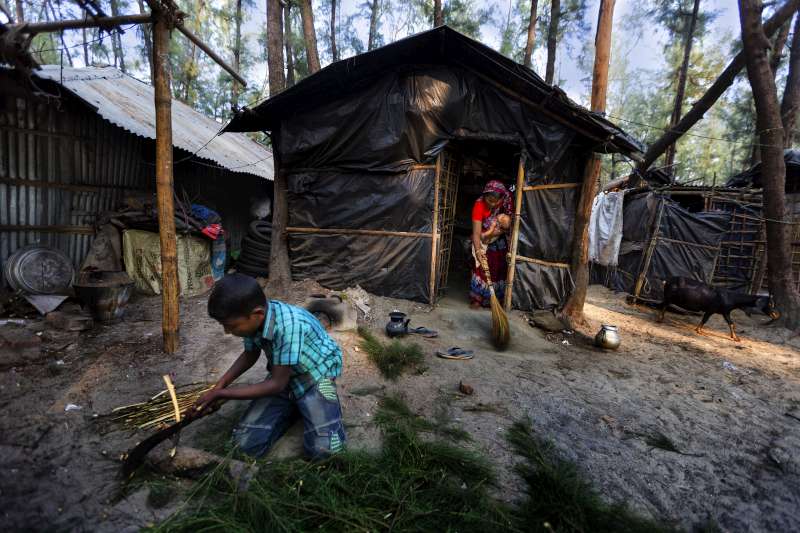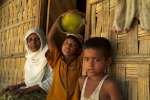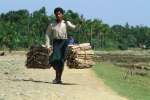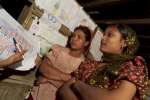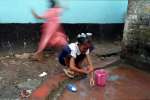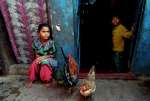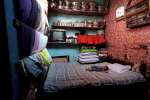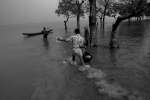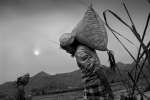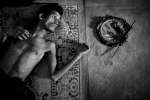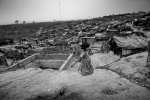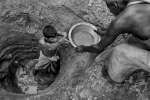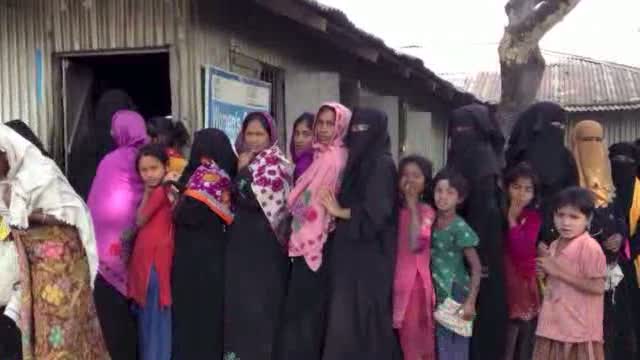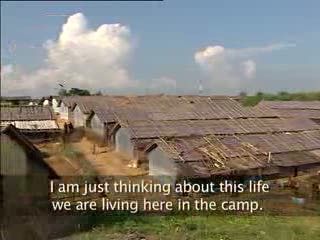As sea levels rise, Bangladeshis seek higher ground
News Stories, 15 December 2015
COX'S BAZAR, Bangladesh, Dec 15 (UNHCR) – When a cyclone struck low-lying Kutubdia Island in 1991, the water surged across Nur Jahan's plot of farmland, swallowed up her home and swept away all six of her children.
"The sea simply ate it," she said of the family's smallholding, where she grew coconuts and raised her children. The youngest was still an infant, the oldest just nine years old. "The water took them all… nobody survived."
With her life upended, Nur Jahan fled from the island in the Bay of Bengal to Cox's Bazar, a town on the Bangladeshi mainland which is fast filling up with islanders like herself displaced by rising sea levels linked to climate change.
Among the more recent arrivals in Kutubdia Para, an urban enclave named for the sinking island, is Abdul Hamid. He moved to the mainland three years ago after the sea threatened to spill over a berm and flood his parents' smallholding.
"The houses within few hundred metres of our house are already gone to the sea… and the houses right opposite ours are already gone," he said, noting that the encroaching sea now regularly floods their land. "Now, even during normal tide, it is flowing over the embankment," he said.
The two former residents of Kutubdia, an island nearly three times the size of Manhattan, are among a growing number of people worldwide who are being driven from their homes by the earth's changing climate.
The UN Refugee Agency has predicted that events linked to climate change, such as storms, floods and droughts, will become the biggest drivers of displacement, both inside and across national borders, within the not too distant future.
It also estimates that natural disasters force an average of 26.4 million people from their homes each year. With an increasing number of vulnerable people living in disaster-prone areas, among them densely populated and low-lying areas of Bangladesh, ever more people are at risk.
"Bangladesh has been affected by multiple disasters, including floods, storms, riverbank erosions, cyclones and droughts. All of these will increase in intensity and frequency as a result of climate change," said Stina Ljungdell, UNHCR's representative in Bangladesh.
"Millions of people… live along Bangladesh's coastline and they remain exposed to storm surges and rise in sea level. We need to take adequate protection simultaneously at the national, regional and global levels to reduce the underlying vulnerability of people, both before and after disasters and displacement occur."
UNHCR hopes that the right policies, effectively implemented, could yet mitigate the risk of displacement. But some fear that the situation in Kutubdia may be beyond saving. Among those who have lost hope is former fisherman Nurul Islam, who fled the island 17 years ago.
He has watched as the community of displaced people in Kutubdia Para has grown from a few hundred families from the island when he first arrived, to as many as 30,000 or even 40,000 today.
"Kutubdia is drowning every day. And every day people are fleeing the island," said the 55-year-old, who ekes out a living from a small grocery store that he runs. "They will continue to come. Kutubdia will not exist anymore. It will just become the sea."
By Saiful Huq in Cox's Bazar, Bangladesh




